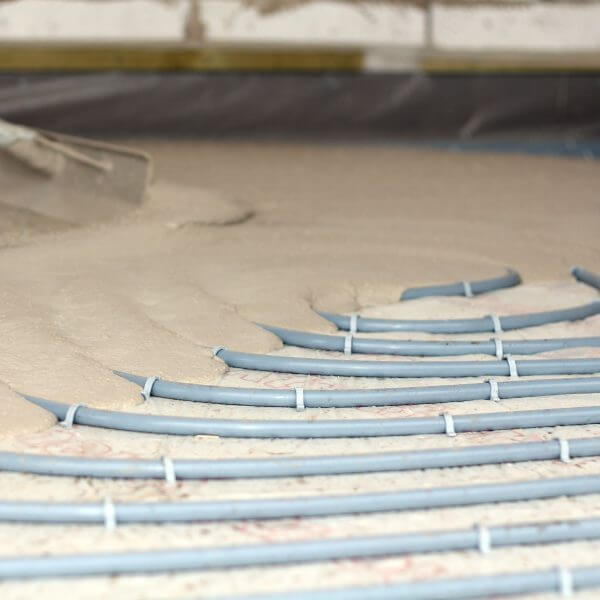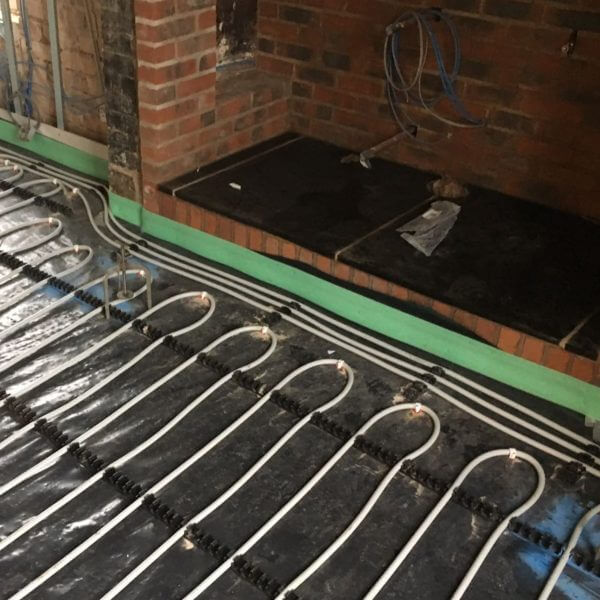Can You Get Wet Underfloor Heating for Suspended Wooden Floors?
There’s a slight misconception that the only type of underfloor heating you can use for a suspended timber joist floor is electric floor heating. This leads to underfloor heating installers being asked for a ground-floor quote, whilst they ask an electrician to quote for the rest.
You don’t need to default to a hybrid setup from the outset. There are two ways you can reap the benefits of wet underfloor heating for wooden flooring. In this blog, we’ll explain both.
If you have an older, converted, or listed building, you should seek an architect experienced with that type of building for their expert opinion. This is to ensure the joists are sturdy enough to take the additional weight.
Which Underfloor Heating System is the Best For Wooden Floors?
Both wet underfloor heating and electric floor heating are appropriate for wooden floors, and both have their own unique advantages. Electric heating is cheaper and easier to install, but has higher running costs on average.
Wet underfloor heating has a higher installation price, but is very energy efficient and compatible with heat pumps, allowing for long-term savings. Read our Wet Vs Electric Underfloor Heating guide for more information on both systems.
Between The Joists
At EasyFlow we call this our EasyJoist solution. With this system, wet underfloor heating pipes run between joists, suspended by lightweight clips attached to said joists. It works with uneven joist spacing and is pretty simple to install (once you pull up the floor boards).
The best advantage of this type of setup is that you don’t increase the height of the floor. This is especially useful in older buildings or conversions with low ceiling height.
Overlay on the Floor
We call this our EasyBacker solution, but the common names are low-profile, backer board overlay, or a tile backer board system. With this, 17mm of floor insulation is laid on top of the floor, and the underfloor heating installers weave the piping into slots installed in the insulation boards.
It is a great non-invasive alternative and can be covered with carpet, tile, and engineered flooring! Though it does raise floor height, this is minimal, and we commonly install this for buildings where floor height is a concern.
Can You Lay Floor Screed on Suspended Wooden Flooring?
It might come as a surprise, but it is possible to cover a backer board setup with liquid floor screed. We can pour a specific formulation called Gyvlon SoundBar designed specifically for application on wooden floors. As the name suggests, this screed is designed to improve room acoustics.
That said, our underfloor heating installers don’t need to lay floor screed to provide a solid floor feel on wooden flooring. With our Easy Board system, you only need a thin application of a levelling compound.
What Flooring is Not Suitable for Underfloor Heating?
If a very high heat output is required to warm the home, then suspended wooden flooring heating that sits between the joists may not be appropriate. This is because timber will expand from high heat and may warp over time. Your underfloor heating installer should be able to advise you on an appropriate solution.
If your property is a listed building, you will need permission from your local authority before you can install underfloor heating for wooden flooring. Our listed building underfloor heating guide can teach you more.
Get Underfloor Heating for Wooden Flooring
EasyFlow are underfloor heating installers, highly experienced with installing wet underfloor heating in unlikely places. Thinking of upgrading your heating? Get in touch with us for a no-obligation quote or advice.




Where To Find Us